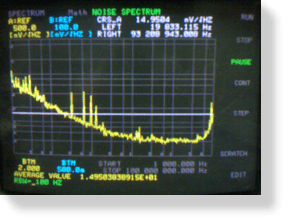Radiation
effects on signal and noise parameters of submicron CMOS technologies
|
 |
|
|  |
G. Gaioni, M. Manghisoni, L. Ratti, V. Re,
V. Speziali,
G. Traversi
|
|
|
The aim of this research activity is to study the properties of the most recent
commercial CMOS technology nodes (down to 0.09 micron), in view of their
application to rad-hard detector front-end systems.
Standard devices in this technologies have a very thin gate oxide
which is expected to lead to an increased ionizing
radiation tolerance with respect to previous CMOS generations.
This property can be exploited where rad-hard CMOS integrated
circuits are required, e.g. in space, imaging and high energy
physics detector applications. In some cases, such as high
energy physics experiments, these circuits have to retain
adequate performances even after the exposure to high doses,
in the order of several MRad or even tens of MRad.
The focus of this activity is to assess analog performance, providing
information to rad-hard IC analog designers, who are gradually shifting
their effort to nanoscale technologies. The examined devices are
fabricated with a standard interdigitated layout, without using the
special techniques that were adopted to avoid radiation-induced leakage
current increase in technologies with a larger feature size.
|

|
|
An interesting point is to verify if open structure devices
can be safely used in rad-hard circuits. Besides key parameters
such as the threshold voltage shift, special attention is given
to the behavior of the white and 1/f components in the noise voltage
spectrum, which are often of fundamental importance in amplifying
and filtering stages. The 1/f noise term is a figure of merit in
radiation effects for MOSFETs. In previous CMOS generations, it
was found to be one of the most sensitive parameters to ionizing
radiation, and its behavior can be correlated to the threshold voltage
shift. In the framework of this activity, the radiation hardness of
deep submicron CMOS processes (from 350 nm to 90 nm)
has been evaluated. CMOS transistors belonging to the
mentioned technologies have been exposed to gamma-rays from a
60-Co source and changes in static, signal and noise parameters
have been monitored.
This study is focused on applications to high density mixed-signal
integrated circuits, where power dissipation is an important issue
and critical devices in the analog processing section have to operate
in the low current density region, where MOSFETs are often
biased in weak or moderate inversion. Therefore, a large part of
the experimental analysis presented in this work is focused on device
behavior under irradiation in these operating regions.
The goal is to define design
criteria for the next generation front-end chips to be operated in
future experiments
at facilities such as SLHC, ILC, Super B-Factory.
|
|
|
|

